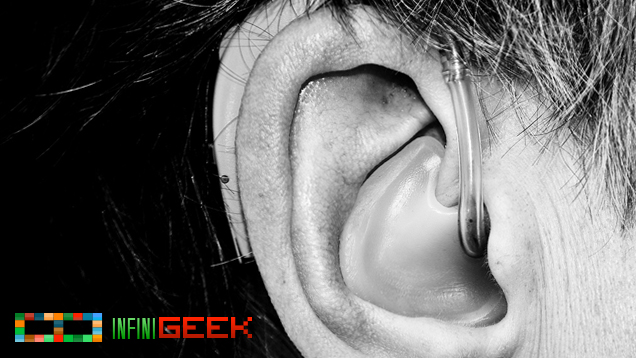cc image by Steve A Johnson
Hearing History
The hearing aid was first developed in the 17th century and came in the form of a ‘hearing trumpet’ which the wearer had to hold by their ear in order to amplify sounds. The arrival of the electronic hearing aid in the early 1900’s meant increased portability for the user but there was still a way to go before the introduction of the hearing aids we have today. Indeed, hearing aid technology has come a long way and continues to progress. Advances have meant that hearing aid users no longer have to deal with large, chunky devices – with many fitting discretely within the ear. Hidden Hearing, for example, offers a range of ‘invisible’ hearing aids which fit inside the ear canal making it virtually unnoticeable to the outside world.
Modern Advances in Hearing
Stirling expert-led team to pioneer hearing aid that can ‘see’
But what’s next for hearing aid technology? Researchers and clinicians at the University of Sterling may have found the answer.
The £500,000 research project aims to develop a hearing aid which can ‘see’ as well as hear. The device will be intended for use within loud environments and will include a small camera which will detect lip reading and shift between audio and visual signals to give a seamless experience.
The ‘intelligent’ hearing aid is set to revolutionize the lives of those with hearing impairment, allowing them to adapt to different situations and provide a comprehensive solution to hearing problems.
The device is also likely to find a place in environments where ear plugs must be worn such as in factories and emergency scenarios where communication is crucial.
A prototype for the device is currently underway – the main challenge for the team at Sterling University is ensuring the time delays for the hearing aids are kept to a minimum (ideally less than 10ms) as well as the complicated task of blending real-time facial cues with appropriately selected audio cues.
The Babelfish concept design from Mads Sukhdev Hindhede captures sound, translating results into readable text.
Eventually, the device may be able to be fitted to accessories such as glasses, brooches or earrings for increased portability and comfort. With over 10 million people in the UK suffering from some type of hearing loss, the research is likely to be welcomed by those suffering from hearing impairment.
